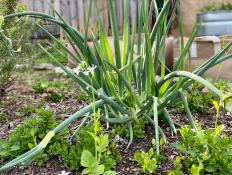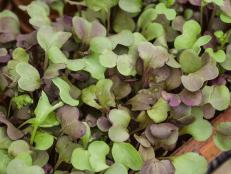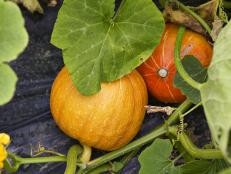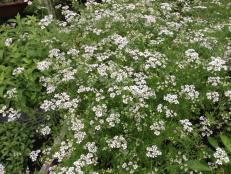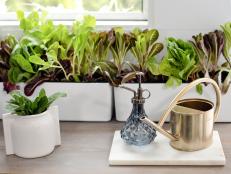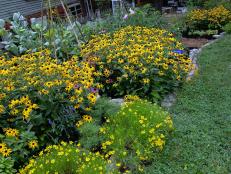Perennial Vegetables and Herbs
Fill your dinner table with the homegrown flavors of edible perennials.
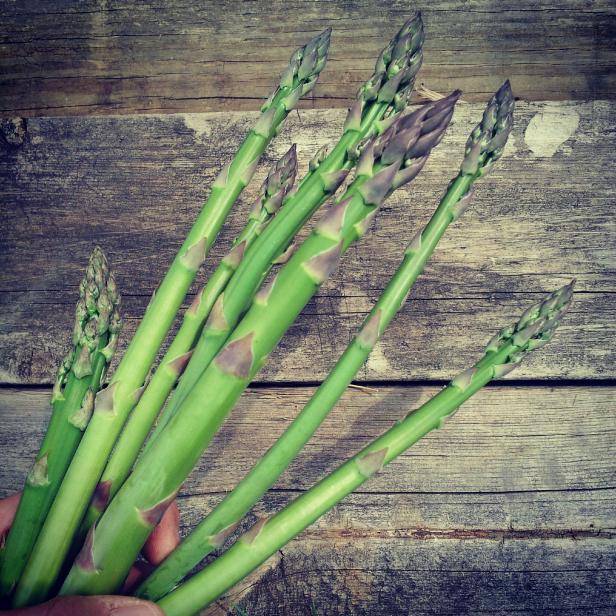
Create an edible landscape featuring perennials—perennial vegetables and perennial herbs. When you focus your efforts on edible perennials, you’re investing in reducing your family’s grocery bills from plants you tuck into the ground once. Like any perennial, edible perennials need specific conditions to thrive. Because plants will be growing in the same spot for years to come, it’s worth the effort to create an ideal foundation for roots.
Edible perennials bring more than good flavor to your landscape. Perennial herbs and vegetables also can play key roles in your landscape, filling the part of ground cover, architectural focal point plant or back-of-the-border beauty. Perennial herbs like lavender or bee balm contribute beautiful blooms to an edible landscape.
Perennial vegetables include the classic spring favorite asparagus. The tasty spears of this perennial vegetable are simply the growing shoots of the plant. Start with healthy crowns and a slow harvest that gradually increases as plants age. Once asparagus reaches three years old, you can expect to harvest spears for five to eight weeks.
Rhubarb is another classic perennial vegetable that yields from spring to early summer. The ruby stems of this edible perennial offer a tart flavor beloved in jam, crisp and pie. Artichoke is a perennial vegetable, although it’s hardy only in the warmest zones. Plants yield their delicious flower buds in spring, with a second harvest in fall.
Perennial herbs combine good looks with great flavor and bring versatility to the garden. Thyme and oregano are both perennial herbs and can function as ground covers in a perennial garden. These herbs each produce more flavorful leaves when they’re tucked into lean, well-draining soil. When these herbs bloom, bees can’t resist the nectar-rich flowers. Check out the different kinds of thyme and oregano, including variegated thyme and gold oregano. Both make eye-catching additions to plantings.
Lavender, sage and rosemary are three perennial herbs that also prefer lean, even gravelly soil. They’re all Mediterranean herbs and grow best when drainage is sharp. Explore the different varieties of these herbs. You can find dwarf lavenders for tight spaces, or opt for the traditional bushier types if you can give plants a little elbow room. With sage, there’s a pretty purple leaf variety, along with a gold variegated and a tricolor type, with shades of green, white and purple on each leaf. Rosemary can form a shrub or be more of a trailing form, which works well on slopes.
Other perennial herbs include onion chives and garlic chives. Both of these herbs are clump-forming perennials with long, linear leaves. Pink-purple flowers appear atop onion chives in spring to early summer. Blossoms are edible and can be used whole or broken apart in sandwiches or salads. Garlic chives, also known as Chinese chives, flower in summer, opening white blooms. Both plants set seed and self-sow in the garden. Garlic chives tend to sow more aggressively than their oniony cousin.







